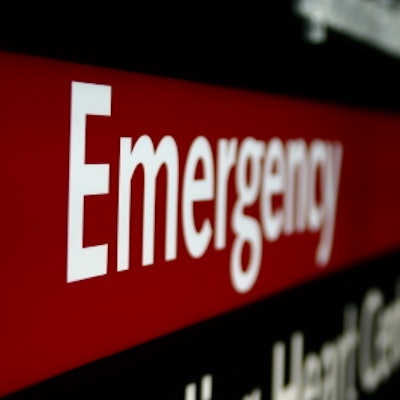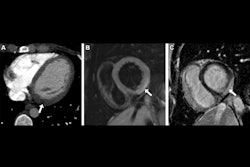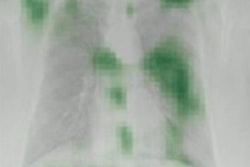
Using an ultralow-dose chest CT instead of a chest x-ray appears to make little difference in terms of improving outcomes for patients imaged in emergency settings, according to a study in the May issue of Thorax.
Researchers led by doctoral candidate Inge van den Berk, of Amsterdam University Medical Centers in the Netherlands, replaced chest x-rays with ultralow-dose chest CT exams in half of nearly 2,500 patients suspected of nontraumatic pulmonary disease. They found outcomes and numbers of patients admitted to hospital were similar between the groups.
"Considering the availability and costs of ultralow-dose CT, the results of our trial do not support [its] routine use in the work-up of patients presenting with nontraumatic pulmonary disease at emergency departments," the group wrote.
Ultralow-dose CT has proven better than chest radiographs for visualizing chest pathology, yet few studies have looked at the effectiveness of both strategies in terms of outcomes for patients in these settings, the group wrote.
To that end, the researchers conducted a trial between January 2017 and May 2018 involving 2,418 consecutive patients suspected of nontraumatic pulmonary disease. Every month, participating emergency departments were randomly allocated to use ultralow-dose CT or chest x-ray. The primary outcome was the functional health of patients after 28 days, as determined by a standard quality of life measurement (the Short Form-12 Physical Component Survey, or SF-12 PCS).
Of the 2,418 patients in the study, 1,208 received an ultralow-dose CT exam and 1,210 were given a chest x-ray.
In 2,418 consecutive patients (ultralow-dose CT: 1,208 and chest x-ray: 1,210) the mean SF-12 PCS score at 28 days was 37 for the ultralow-dose CT group and 35.9 for chest x-ray. After ultralow-dose CT, 638/1,208 (52.7%) patients were admitted compared with 659/1,210 (54.5%) patients after chest x-ray.
| Patient outcomes in patients suspected of nontraumatic pulmonary disease | ||
| Patients receiving chest x-ray | Patients receiving ultralow-dose CT | |
| Mean SF-12 PCS score at 28 days | 35.9 | 37 |
| Patients being admitted | 659 (54.5%) | 638 (52.7%) |
However, more ultralow-dose CT patients were in follow-up because of incidental findings, the group found.
"We showed that ultralow-dose CT leads to functional health outcomes at 28 days that are at least similar to those obtained if management is guided by chest x-ray, while resulting in minimal differences in hospital admission rates," the group wrote.
The value of a diagnostic test is not expressed by its accuracy, but depends on how it affects patients' health, the researchers noted. Ultimately, the study supports current guidelines that recommend the chest x-ray as a first-line technique in these patients, they wrote.
"Future research should focus on subgroups of patients that might benefit of ultralow-dose CT," the authors concluded.




















